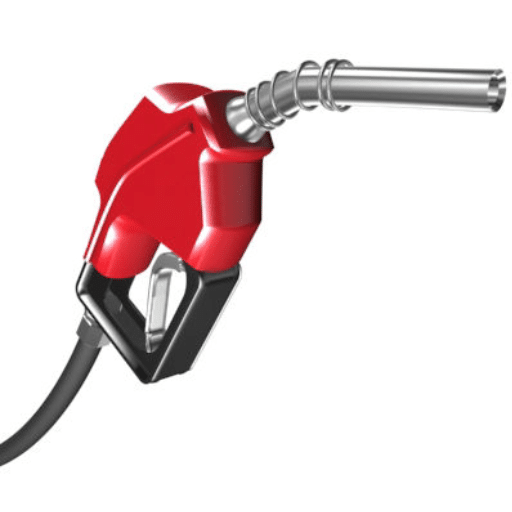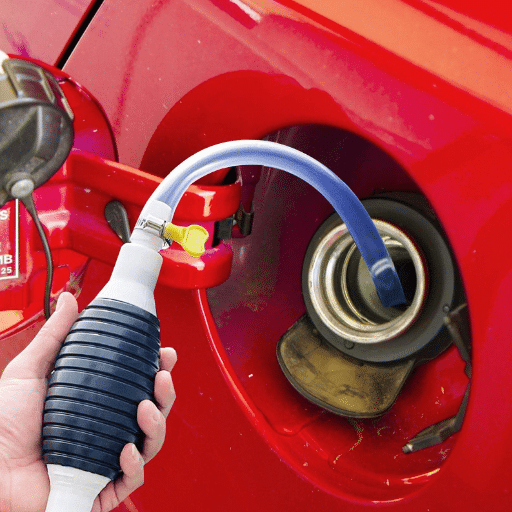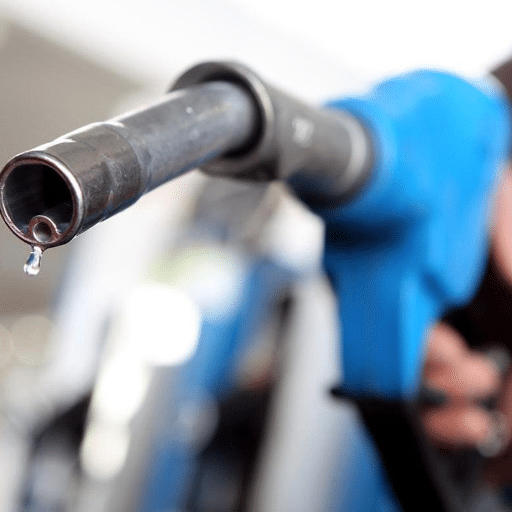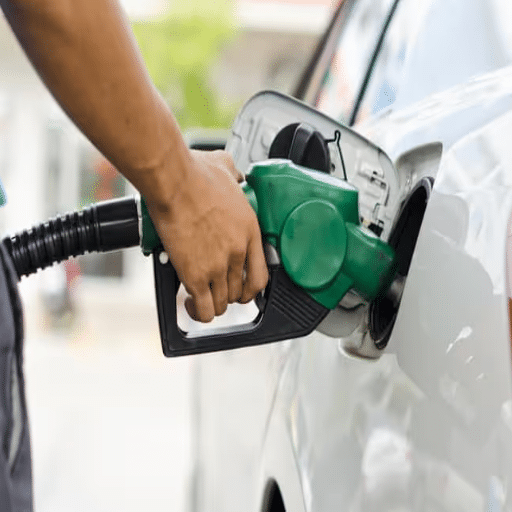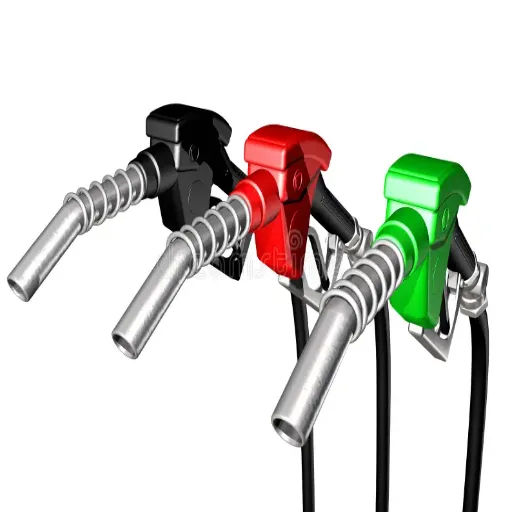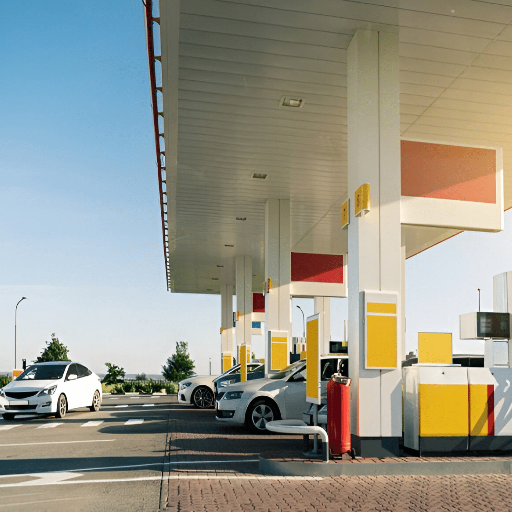The gas station has become an integral part of everyday life, serving millions of people. Have you ever considered how profitable these stations are? For many, they are simply places where one refuel, grabs a snack or picks up an essential item in a hurry. Behind these venues, however, lies a fascinating business model that combines fuel sales, retail operations, and often other services to generate revenue. This article examines the financial operations of gas stations, the factors that impact their profitability, the challenges they encounter, and the strategies employed by successful businesses to thrive in a competitive market. Whether your interest lies in pure curiosity or investing in this trade, you’ll certainly gain some insight into the economics of running a gas station.
Overview of Gas Stations and Profitability
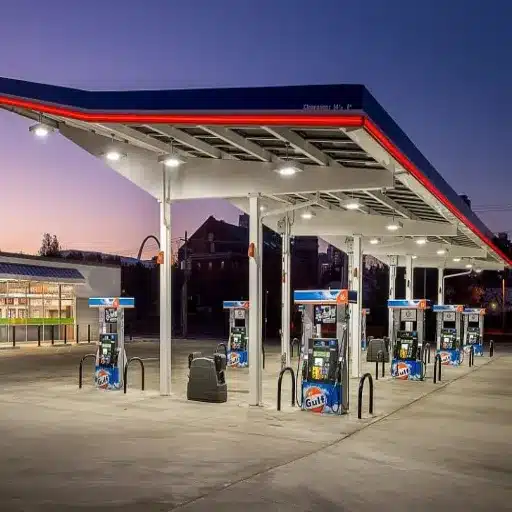
With profit centers including fuel sales, convenience store items, and supplementary services such as car washes or repairs, the emphasis on sales is generally on fuel sales; however, profit margins on fuels are relatively low due to the varying price of oil and competition. On the contrary, convenience store sales, with comparatively high profit margins, give Insigne a reason to prioritize profit. Successful gas stations primarily depend on heavy traffic, an effective pricing strategy, and exceptional customer service to achieve good profitability and remain competitive.
What Are Gas Stations?
In the early years of the gas station, the drivers would have to supply their fuel. This may involve the driver siphoning fuel from barrels or containers, carrying his jerry cans, or, in the case of long-distance vehicles, having to buy it from a competing competitor. On the other hand, the uncontrolled absence of such stations would be rare; there would be only supplies located in local markets, vending a few gallons, if at all.
The latest industry analysis reveals that with a market valuation in the hundreds of billions of dollars, fuel stations operate in millions all over the world. In the United States alone, there are more than 145,000 fuel-giving stations, serving nearly 130 billion gallons of gasoline each year. They serve a variety of consumer needs, ranging from fully self-service 24/7 gas stations to full-service options that include vehicle maintenance, car washing, and other services. However, in the wake of the electric vehicle trend, some stations have also incorporated EV charging points to stay in line with evolving consumer needs and the global demand for sustainable energy solutions.
Gas stations form the very infrastructure of transportation, providing the energy hubs from which, through mobility and commerce, various forms take shape on different scales in an adjoining area. They have strategic placements on highways, urban centers, and rural roadways so that a driver can always access energy wherever they are.
How Much Profit Do Gas Stations Make?
Profit margins at gasoline stations can vary significantly depending on factors such as location, fuel prices, and the services offered. On average, gas stations tend to earn a net profit margin of around 1.4% to 2%, which is significantly lower than most other retail industries. Selling gasoline may seem like the most lucrative business; however, the reality is that most of the money generated from fuel sales goes toward crude prices, refining, distribution, and taxes.
To counter the slim profit margin on fuel, many gas stations may generate extra revenue from convenience store sales of items that get higher markups, such as snacks, beverages, tobacco, and automotive supplies. For instance, a large portion of gas station profits often comes from convenience store items, where margins can range from 30% to 40% for some products.
Other sources of income include car wash services, air pumps, or food chains integrated with gas stations. By ensuring their stations keep longer on older trends, such as EV charging stations, gas station owners stand to make even more competitive earnings in the emerging marketplace. Apart from the low margins on fuel sales, diversification, and strategic location are the KEYS to profitable gains.
Factors Affecting Gas Station Profitability
Fuel Prices and Margins: Fuel prices are a crucial component in determining the profitability of a gas station. Retailers have slender margins, usually getting just a few cents on every gallon they sell. Reports from the industry indicate that the net profit on an average gallon of gas ranges between 5 and 10 cents after accounting for the costs of crude oil, refining, distribution, and marketing. A variation in the international price of oil or changes in regional supply and demand can significantly impact the gross income of a gas station.
Location Traffic Patterns: High vehicle traffic can significantly enhance profitability from a location-based perspective. Highway-side, intersection-side, or urban center-side stations usually enjoy a steady flow of customers. Convenience stores benefit from increased sales when located near residential or commercial areas, thereby forming a secondary source of revenue.
Additional Revenue Streams: Non-fuel goods and services account for a significant portion of a gas station’s profitability. Most convenience stores generate higher profit margins compared to the sale of fuel. Profit margins for snacks, soft drinks, and household essentials run between 30 and 40 percent. Other premium services, such as automatic car washes, provide additional revenue streams and can generate more than $100,000 per year at a well-trafficked location.
Confronting New Technology: The rise of electric vehicles, however, has been changing the landscape of gas stations. The integration of EV charging stations thus holds the potential to attract a new set of customers while providing long-term growth prospects. Charging sites with premium fast-charging capabilities have been reported to generate approximately $1,500 per month per charger at leading locations, drawing attention to the lucrative possibilities of this emerging market.
Seasonal and Economic Impacts: Typically, gas station earnings are influenced by seasonal variations. Summer typically sees increased fuel demand, while prices plummet in winter, primarily due to a decrease in driving activity. On the other hand, the general economic environment may impact the sales of all simmering products and services through fluctuations in inflation and changes in consumer spending capacity.
Understanding these factors and incorporating innovative ideas will help gas station proprietors increase their profits and remain competitive in this rapidly evolving industry.
Revenue Streams for Gas Station Owners
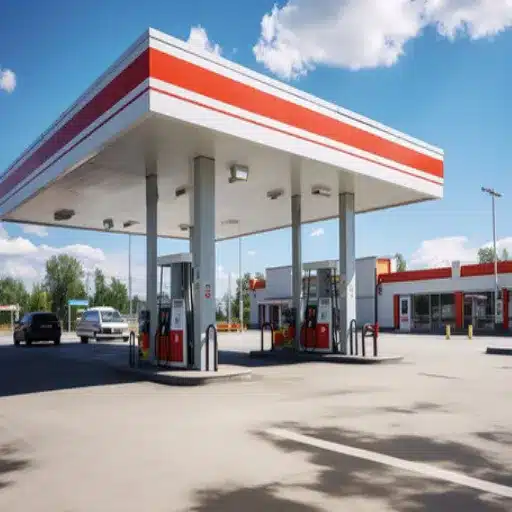
While fuel is undoubtedly the cornerstone of a gas station’s fluid income, sales from convenience stores form another significant revenue stream. These items comprise snacks, drinks, or anything else, from cleaning agents to kitchenware, with a substantial impact on the margins. Specific car-wash options are big-ticket moneymakers, while I cannot confirm anything else. Moreover, gas stations also take commission through lottery sales, charging for air pumps, and ATM fees. Food chains or coffee shops located alongside the gas stations also work to attract more customers, which now acts as a plus for more revenue sources. Diversifying income sources and adjusting to consumer needs ensure that a gas station owner goes for a highly stable and profitable business model.
Primary Revenue Sources
Gas stations rely on several streams of revenue for sustenance and expansion. The primary three sources include fuel sales, convenience store items, and additional services. Fuel sales account for a significant portion of a gas station’s revenue, with pricing and location being key factors in attracting customers. Convenience store sales, including snacks, beverages, and miscellaneous items, yield better profit margins than fuel sales. Additional services, such as car washes, lottery tickets, and air pumps, provide a steady income with relatively low operating costs. Partnerships with food chains or coffee vendors further boost revenue potential by providing additional foot traffic and a more diversified income stream. Focusing on these very areas ensures that gas station owners will be set for steady profit-making activities.
Additional Revenue Streams
One means gas stations have been implementing to diversify their income streams is service innovation, a means of adapting to a highly dynamic market. Charging for electricity to electric vehicles, or EV charges, is becoming a growing opportunity. With the global EV market in a growth phase, it was estimated that over 40 million EVs would be on the road by 2030. By investing in fast-charge infrastructure, gas stations create demand for a new clientele while also taking advantage of government incentives and programs implemented to promote clean energy.
The other profitable avenue is in advanced technology for convenience stores. Data indicates that convenience stores in the United States alone reported sales exceeding $650 billion in 2022, driven by consumer demand for on-the-go meal options, innovative store layouts, and smart checkout systems. From an operational perspective, providing contactless payments, as well as streamlining loyalty points into a digital platform, has increased retention and spending.
Moreover, partnerships with couriers and food delivery services are also highly profitable ventures. Projecting a 10.5% annual growth of the global food delivery market through 2030, setting up pickup stations or temporary storage for delivery drivers can prove mutually profitable.
Finally, fuel pump advertising is gaining traction as a digital ad channel. The screens provide a channel through which local businesses and big brands can pay cash for ads while delivering a steady stream of passive income for gas station owners. Hence, by leveraging these foundational innovations, gas stations will remain ahead and earn a profit in the midst of changing retail landscapes.
Impact of Location on Revenue
The establishment’s location primarily determines the revenue potential. Proximity to bustling traffic areas, such as highways, urban centers, or busy intersections, results in increased customer traffic and higher fuel demand. According to some industry accounts, traffic on the roads can exceed 20,000 vehicles every day, often located right next to a gas station, resulting in increased fuel and convenience store purchases. In areas of little competition, stations generate larger margins as they don’t have to split business with other alternatives.
An additional factor that influences revenue is the demographic makeup of the location. For example, gas stations in suburban areas generally serve commuters and families, thus generating steady sales of fuel and, foremost, convenience items. Urban locations, on the contrary, could experience more foot traffic if well-integrated with convenience stores or other services, such as EV charging stations and fast-food outlets. By selecting locations that meet demand and offer the best access points, gas station operators and owners can capitalize on the surrounding customer base.
Types of Gas Stations and Their Profit Margins
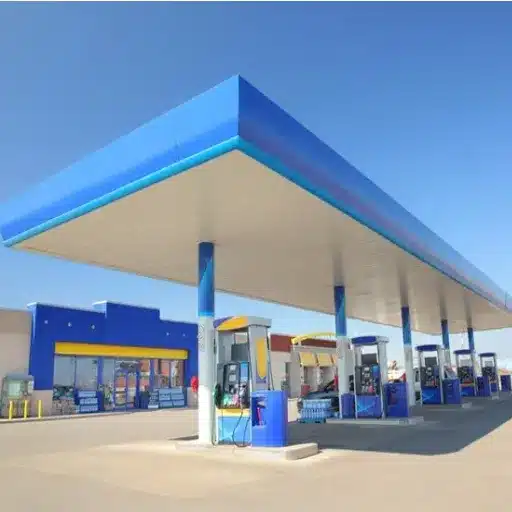
Full-Service Gas Stations: These stations feature attendant fuel pumps, windscreen wash, and, in some cases, perform basic vehicle checks. The attendants put customers at ease, thus increasing operational costs for staffing but decreasing the profit margin compared to self-service stations. On the other hand, such stations tend to foster customer loyalty in areas where personalized services are highly valued.
Self-Service Gas Stations: At these stations, customers pump their fuel, significantly reducing labor costs. They have a comparatively higher profit-making capacity, as less working cost is required. They are common in urban areas, where customers highly value speed and efficiency.
Gas Stations with Convenience Stores: In addition to selling gas, they market snacks, drinks, and other merchandise, which typically results in higher total revenue. The margin on gas itself may be slim, but other convenience items generally carry a heavy markup that pushes profits up.
Gas Stations with EV Charging Stations: With the advent of electric cars, an increasing number of gas stations have installed facilities for EV charging. Installation will cost a considerable sum, but it could establish a center of eco-conscious patrons while providing diversification in their revenue sources. Margins may differ concerning electricity pricing and charging fees, but they would certainly help in their long-term survival.
After all, by understanding the different types of gas stations and their profit mechanisms, operators can assess and select their own in tune with a particular market and customer profile.
Independent Gas Stations
Independent gas stations are not bound to big oil brands. This means greater flexibility in price-setting and operations. These types of stations rely heavily on customer loyalty in their local areas and on maintaining competitive fuel prices. Recent data indicate that independent stations comprise a significant portion of the market in many regions, accounting for approximately 60% of retail fuel outlets in the U.S. They typically succeed by targeting niche markets, underserved rural areas or by offering value-added services such as convenience stores, car washes, or food options.
Above all, one of the key advantages of independent gas stations lies in their ability to source fuel from independent suppliers, thereby negotiating prices that enable them to offer savings to their customers. The downside of this independence is that they lack the backing of a large oil company when times get tough, a nd fluctuations in prices become imbalanced, to their detriment.
Furthermore, independent stations are going green, supplying EV charging points or biodiesel to cater to the environmentally aware. One of the reports suggests that there is a growing number of independent locations embracing renewable energy to generate irregular earnings while addressing environmental needs. These stations have found that striking a balance between adaptability and innovation keeps them at the top, even in a shifting energy market.
Franchise Gas Stations
Franchise gas stations are increasingly adopting technological advancements and green measures to meet the ever-changing demands of consumers and regulatory requirements. A 2023 industry study indicates that 70% of franchise gas stations in the U.S. now offer alternative fuel choices, including EV charging stations and hydrogen fueling. This move aligns with the growth in EV adoption; globally, EV sales in 2022 accounted for more than 8% of total vehicle sales.
Many of the operators have also subsequently adopted digital payments and mobile apps to enhance customer convenience and loyalty. For example, apps with promotions and rewards programs are used by more than half of the major gas station franchises today, enabling further growth in customer retention. These modern technologies help competing firms to maintain their edge, presenting clean solutions and simplified services to potential customers.
From a financial perspective, it is forecasted to grow at a 5.8% CAGR until 2028. Urban infrastructure expansion, increased vehicle ownership in developing regions, and government policies promoting the adoption of alternative energy are among the factors driving its growth. With multiple streams of revenue, including profits from convenience stores and renewable energy implementation, franchise gas stations should be able to grow sustainably as the market continues to evolve rapidly.
Comparing Profit Margins
It has been noticed that franchise gas stations have recently maintained a level of profitability with divergent results. The typical profit margin for gas stations ranges from 2% to 3%, depending on fluctuating fuel prices and wholesale costs. A significant portion of revenue is also derived from non-fuel services, which may include convenience store sales, often with margins of over 25-30%.
The added variety helps franchise gas stations to outperform traditional retail businesses with slim margins. Grocers work with net profit margins of about 1-2%, while restaurants fare somewhat better with an average of 3-5%. As the integration of renewable energy solutions progresses, some gas stations offering EV charging and green energy solutions have experienced steady increases in total earnings, indicating higher long-term operating margins.
It thus becomes clear from the above that while fuel sales support operations, profits are increasingly derived from supplementary services and the ability to diversify in response to changing market demands.
Calculating How Much Money a Gas Station Makes
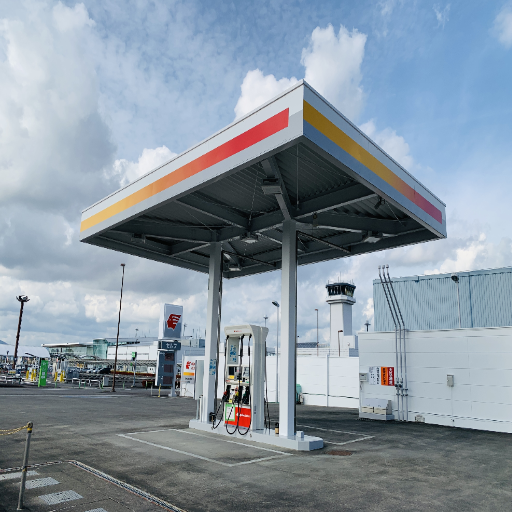
Try to imagine the revenues earned by a gas station based on its location, size, and services offered. Typically, gas stations have a net profit margin of about 1.4% to 3% for every gallon of gasoline sold, due to stiff competition and fluctuating fuel prices. The most significant revenue would come from fuel sales, while a substantial portion of their profits comes from retail sales in convenience stores, car washes, and other services. Thus, snacks, drinks, and lotteries enjoy very high-profit margins, ranging from 30 to 50%. Therefore, whichever initiative the gas station takes to lure customers to try its product and service offerings must enhance the performance of fuel and non-fuel sales.
Understanding Gas Station Revenue Models
Gas stations utilize a diversified revenue model to maximize profits. The bulk of revenues comes from the sales of fuel. Profit margins on gasoline are slim, often only a few cents per gallon, due to fierce price competition and fluctuating oil prices. Industry figures suggest that gross margins on fuel are generally between 10% and 15%, from which net profit margins are significantly lower after factoring in variable costs, such as rent, utilities, and labor.
To counteract these low margins, gas stations rely heavily on the profits derived from their non-fuel sales. Convenience stores, for example, form a significant component of overall profitability. Items are sold in stores at margins ranging from 30% to 50% and include snacks, beverages, and prepared foods. Now, more stations are featuring gourmet coffee, along with hot food options, and sometimes even quick-serve restaurants, to capitalize on the business of busy commuters. The other major revenue generator is a car wash, which generates anywhere from $4 to $6 in profits per wash, depending on the location and service level.
Other income streams include lottery ticket sales and ATM fees, both of which encourage consumers to enter the stores and consequently increase impulse buys. Some stations have hopped on the trend and offer electric vehicle charging stations, marrying a service in high demand with stores potentially converting EV drivers into repeat convenience store patrons.
By leveraging this broad-based revenue-generating scheme, gas stations can compete and survive under the umbrella of fluctuating fuel prices and challenging market conditions. Through constant innovations and service changes to keep pace with consumer demands, gas stations remain profitable and continue to grow their base of loyal customers.
Estimating Profitability Metrics
Fuel sales and non-fuel revenues are key factors to consider when evaluating the profitability of a gas station. Gas stations typically earn only a couple of pennies per gallon of fuel sold, due to high overhead costs and competitive pricing. Industry estimates suggest that net profit margins for fuel generally run between 1% and 3%. However, they get far better margins from non-fuel sales.
Convenience store sales make or break a gas station’s profitability. Snack foods, drinks, and small purchases—all of these can carry margins of 30% to 50%. For instance, selling a soda for $1.50 could yield a profit of 50 cents to 75 cents for the convenience store. They can also generate a 50-70 percent profit margin for a car wash with very few costs.
The data indicate that the average annual revenue for a gas station in the United States can range from $1 million to $4 million, with profitability heavily influenced by location, traffic volume, and the services rendered. Such stations present the most significant opportunities for fuel sales, high traffic, and, therefore, greater income from allied services.
High operational costs, including rent, labor, utilities, and maintenance, can significantly impact the profitability of gas stations. Generally, such costs account for approximately 80-90% of a gas station’s revenues. Hence, improving operational efficiencies and diversifying services are the two critical paths for recovering profitability in this highly competitive trade.
Challenges Faced by Gas Station Owners
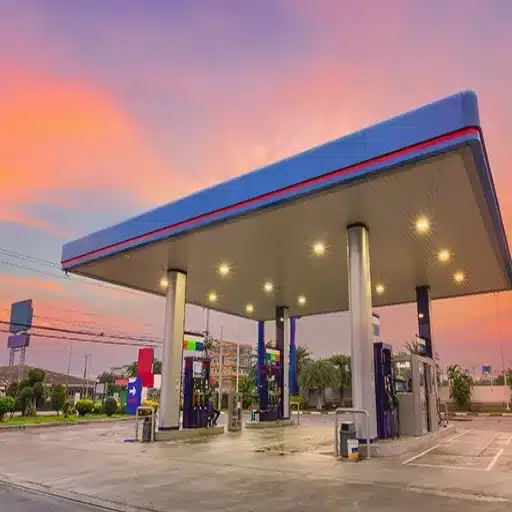
One of the main challenges gas station owners face is the frequent fluctuation of fuel prices, which affects the margins they work on and the demand for the product. Longer days of running costs, such as higher wages, electricity bills, and maintenance charges, provide an additional squeeze on profit. Competition, whether from another gas station in the next block or from big retail chains, presses one to continuously evolve their pricing and services to stay ahead of others. Compliance with laws and regulations, especially those related to environmental and safety standards, is another area that can be extremely expensive and challenging to adhere to. Finally, changes in consumer preference, such as an increase in the use of electric vehicles, pose a longer-term challenge to the more traditional gas station business model.
Market Competition and Pricing Strategies
The gas station industry is highly competitive; owners must strategize effectively on pricing to attract and retain customers. With profit margins typically ranging from 1.4% to 2%, gas stations rely on competitive pricing and generate income from auxiliary services, such as convenience stores, car washes, or vehicle repairs. Dynamic pricing models are increasingly used, where prices change in response to fluctuations in crude oil prices, demand in local markets, and prices set by competitors. For instance, increased prices of crude oil would lead to higher retail prices, thereby solidifying changes in customer purchasing behavior.
Industry-level data indicates that loyalty programs are key differentiators in local market competition. Gas stations with integrated fuel reward programs increase customer retention by an average of 25%, as these programs incentivize repeat visits and foster loyalty among customers. When combined with technological innovations such as mobile applications and real-time pricing information, businesses can better align with consumer expectations and enhance operational efficiency, all while remaining agile in response to market dynamics and consumer trends, including sustainability, which significantly influences pricing strategy adaptations.
Operational Costs and Their Impact on Profit
Since operating costs are a critical factor in determining a business’s profitability, they should include expenses related to utilities, wages, raw materials, and logistics, which directly impact the margin that any company can obtain. An example is labor cost itself — the level of expenditures concerning labor, which has reached approximately 30 percent or more of operational costs in numerous industries worldwide. Hence, efficient workforce management is of great concern.
Moreover, businesses continue to be hampered by skyrocketing energy prices, with electricity and gas prices increasing by at least 15% in several territories this calendar year. To counter these challenges, companies have been exploring alternative methods to enhance energy efficiency or transition to renewable energy sources, thereby achieving substantial long-term cost savings.
Additionally, supply chain disruptions, exacerbated by global market volatility, have put businesses under pressure to reassess their procurement strategies. For illustration, transportation cost-lowering and lead-time-shortening alternatives for nearshoring and local sourcing have been adopted by various companies. Investing in complex technology, such as inventory management software, has also rewarded the organizations by cutting operational inefficiencies by up to 20%.
Ultimately, companies that constantly monitor operational expenses and adapt accordingly are in a much better position to safeguard their margins in today’s competitive environment.
Regulatory Challenges in the Gas Station Industry
Regulatory challenges in the gas station industry are mainly associated with environmental laws, fuel price regulations, and workplace safety standards. I believe that staying informed about policy changes and adjusting practices accordingly is crucial to prevent penalties and ensure a smooth business operation. These challenges should be monitored regularly, with due collaboration from regulators, and accompanied by investments in technology that promote sustainability and compliance.
Reference Sources
Frequently Asked Questions (FAQs)
What is the profitability of gas stations?
The profitability of gas stations can vary significantly based on location, operating expenses, and the services offered. Generally, gas stations earn revenue primarily from fuel sales. Still, many also generate income through convenience store sales and additional services, such as oil changes and car washes, which tend to have higher profit margins than fuel sales.
How much money does a gas station make annually?
The amount of money a gas station earns annually can vary significantly. Independent gas stations may earn less than franchise operations due to the lack of brand recognition and established customer bases. On average, a successful gas station can generate between $300,000 and $1 million in annual revenue, depending on various factors such as location and the services offered.
What are the main revenue streams for gas stations?
Gas stations typically generate revenue from fuel sales, convenience store sales, and additional services such as car washes and minor repairs. These revenue streams can significantly affect a gas station’s overall profitability, with store sales often providing healthy profit margins compared to fuel sales.
Do gas station owners make a good profit?
Yes, gas station owners can make a good profit, especially if they manage operating expenses effectively and offer high-margin services. However, profitability can be influenced by factors such as market competition, location, and the ability to adapt to changing consumer preferences.
How do gas stations drive traffic and encourage repeat business?
Gas stations can drive traffic by offering competitive fuel prices, convenience store promotions, and additional services like oil changes and car washes. Encouraging repeat business often involves providing exceptional customer service and maintaining a clean, welcoming environment.
What factors affect the profitability of owning a gas station?
Several factors affect the profitability of owning a gas station, including location, competition from rival gas stations, operating expenses, and the range of services provided. Additionally, changes in fuel prices and environmental issues may also impact overall profitability.
Is starting a gas station a good investment?
Starting a gas station can be a good investment if the market conditions are favorable and you have a solid business plan. Potential gas station owners should consider factors such as location, financing options, and the initial capital required to build a gas station and purchase the necessary equipment.
What type of gas station is most profitable?
Franchise gas stations often prove to be more profitable than independent gas stations due to established brand recognition and customer loyalty. However, independent gas stations strategically located and offering unique services can also achieve high profitability.


